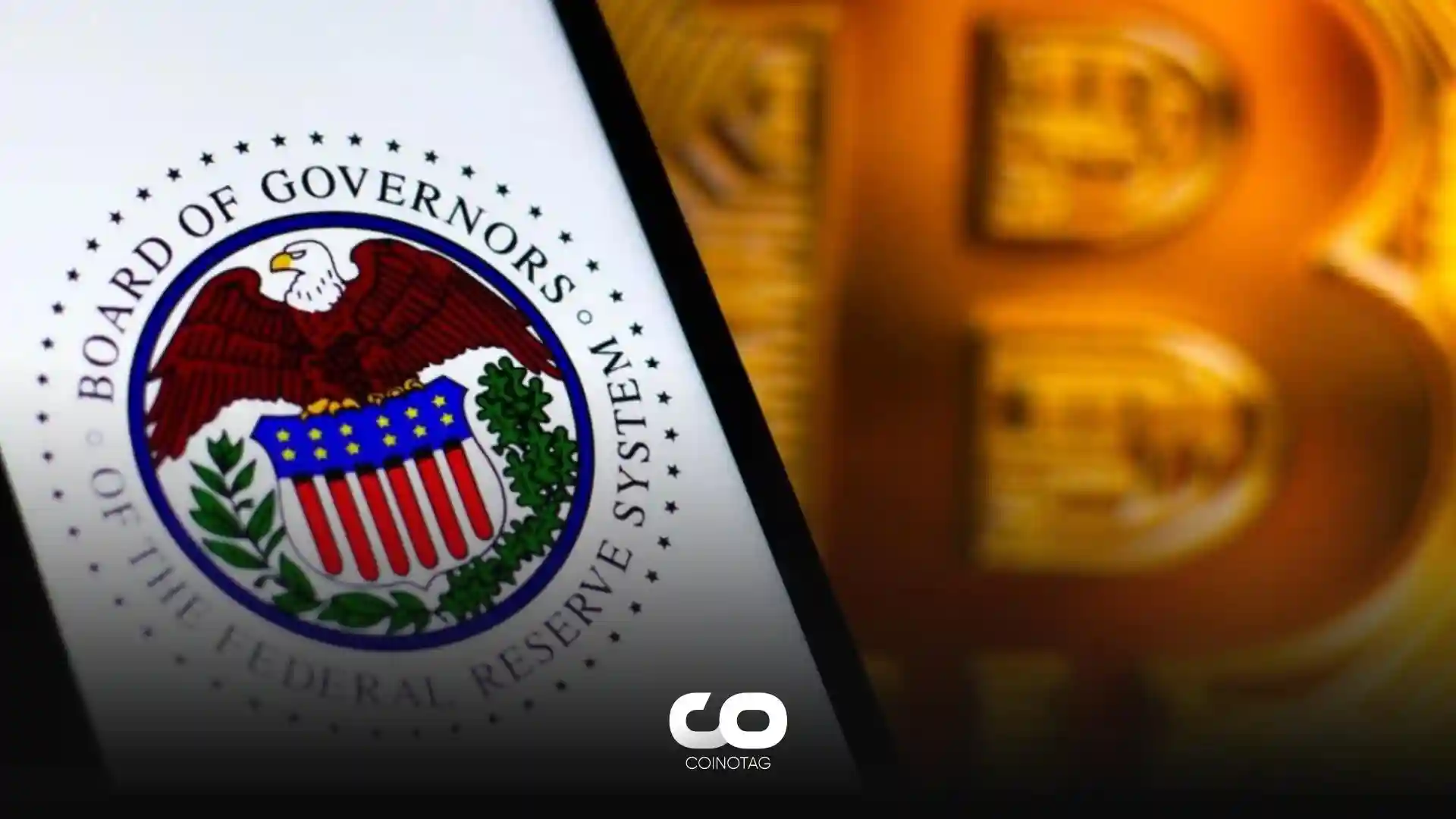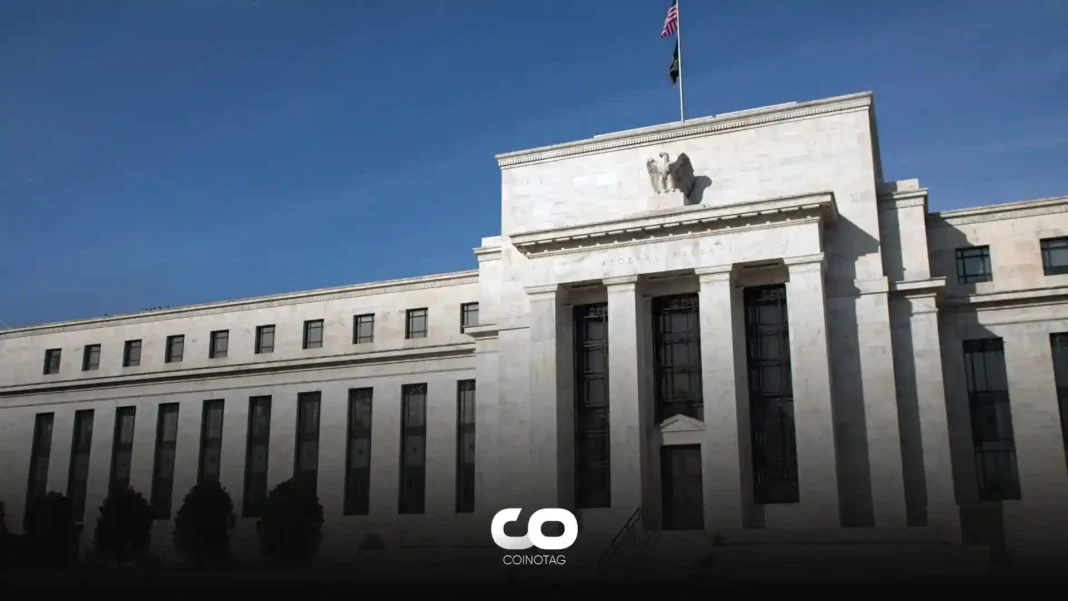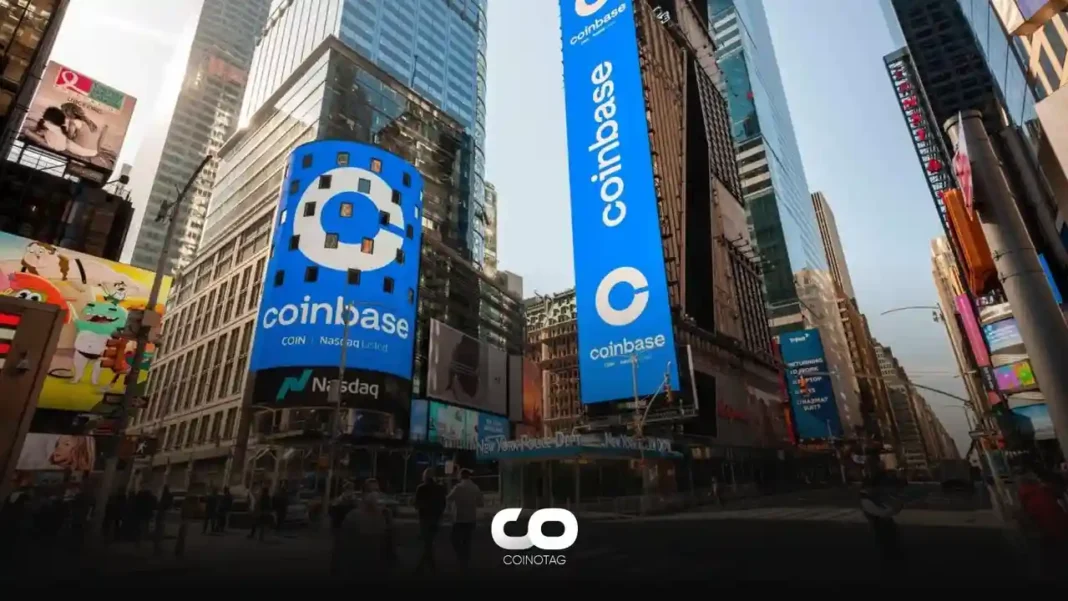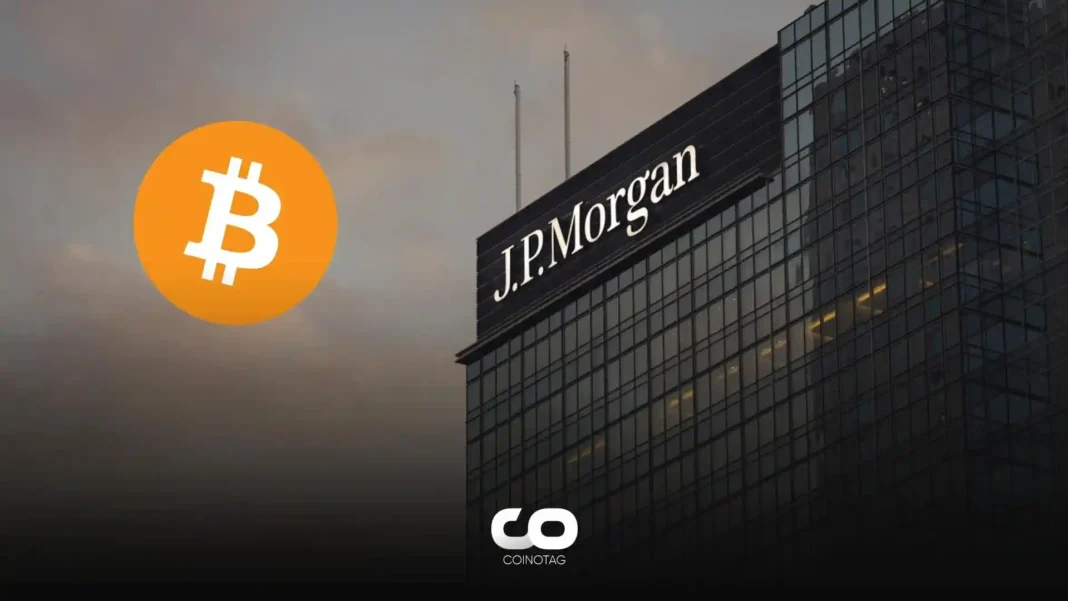| COINOTAG recommends • Exchange signup |
| 💹 Trade with pro tools |
| Fast execution, robust charts, clean risk controls. |
| 👉 Open account → |
| COINOTAG recommends • Exchange signup |
| 🚀 Smooth orders, clear control |
| Advanced order types and market depth in one view. |
| 👉 Create account → |
| COINOTAG recommends • Exchange signup |
| 📈 Clarity in volatile markets |
| Plan entries & exits, manage positions with discipline. |
| 👉 Sign up → |
| COINOTAG recommends • Exchange signup |
| ⚡ Speed, depth, reliability |
| Execute confidently when timing matters. |
| 👉 Open account → |
| COINOTAG recommends • Exchange signup |
| 🧭 A focused workflow for traders |
| Alerts, watchlists, and a repeatable process. |
| 👉 Get started → |
| COINOTAG recommends • Exchange signup |
| ✅ Data‑driven decisions |
| Focus on process—not noise. |
| 👉 Sign up → |
- The Federal Reserve (Fed) has decided not to change interest rates; many believe this decision will signal the end of the central bank’s interest rate hike cycle and pave the way for interest rate cuts next year.
- Although the central bank stated that it would maintain the 2% inflation target, Columbia Business School economics professor Brett House said, “The real question at this point is when they will start cutting.”
- Following the announcement of the Fed’s interest decision, Bitcoin experienced a 0.70% increase from levels around $42,140 to $42,440.
The Federal Reserve (Fed) has announced its interest decision: The eagerly awaited interest decision by the Fed is creating volatility in the markets: All the details!
Fed Announces Year-End Interest Decision

The Federal Reserve (Fed) has decided not to change interest rates; many believe this decision will signal the end of the central bank’s interest rate hike cycle and pave the way for interest rate cuts next year. The Fed has raised interest rates 11 times since March 2022—the fastest tightening since the early 1980s. Rising interest rates have increased consumer borrowing costs, putting pressure on many households, while inflation remains high.
Although the central bank stated that it would maintain the 2% inflation target, Columbia Business School economics professor Brett House said, “The real question at this point is when they will start cutting.” The federal funds rate, set by the U.S. central bank, is the interest rate at which banks lend and borrow overnight. While it is not the rate consumers directly pay, the Fed’s moves still affect interest rates for borrowing and saving that consumers see daily.
| COINOTAG recommends • Professional traders group |
| 💎 Join a professional trading community |
| Work with senior traders, research‑backed setups, and risk‑first frameworks. |
| 👉 Join the group → |
| COINOTAG recommends • Professional traders group |
| 📊 Transparent performance, real process |
| Spot strategies with documented months of triple‑digit runs during strong trends; futures plans use defined R:R and sizing. |
| 👉 Get access → |
| COINOTAG recommends • Professional traders group |
| 🧭 Research → Plan → Execute |
| Daily levels, watchlists, and post‑trade reviews to build consistency. |
| 👉 Join now → |
| COINOTAG recommends • Professional traders group |
| 🛡️ Risk comes first |
| Sizing methods, invalidation rules, and R‑multiples baked into every plan. |
| 👉 Start today → |
| COINOTAG recommends • Professional traders group |
| 🧠 Learn the “why” behind each trade |
| Live breakdowns, playbooks, and framework‑first education. |
| 👉 Join the group → |
| COINOTAG recommends • Professional traders group |
| 🚀 Insider • APEX • INNER CIRCLE |
| Choose the depth you need—tools, coaching, and member rooms. |
| 👉 Explore tiers → |
Following the announcement of the Fed’s interest decision, Bitcoin experienced a 0.70% increase from levels around $42,140 to $42,440. The dollar index also showed a 0.55% decline, falling from 103.880 to 103.315.
Here’s a look at how the central bank’s interest rate hike cycle has affected everything from mortgage rates to credit cards, auto loans, and student debt, and what borrowing costs could look like in the future:
| COINOTAG recommends • Exchange signup |
| 📈 Clear interface, precise orders |
| Sharp entries & exits with actionable alerts. |
| 👉 Create free account → |
| COINOTAG recommends • Exchange signup |
| 🧠 Smarter tools. Better decisions. |
| Depth analytics and risk features in one view. |
| 👉 Sign up → |
| COINOTAG recommends • Exchange signup |
| 🎯 Take control of entries & exits |
| Set alerts, define stops, execute consistently. |
| 👉 Open account → |
| COINOTAG recommends • Exchange signup |
| 🛠️ From idea to execution |
| Turn setups into plans with practical order types. |
| 👉 Join now → |
| COINOTAG recommends • Exchange signup |
| 📋 Trade your plan |
| Watchlists and routing that support focus. |
| 👉 Get started → |
| COINOTAG recommends • Exchange signup |
| 📊 Precision without the noise |
| Data‑first workflows for active traders. |
| 👉 Sign up → |
Credit Card Interest Rates
Most credit cards come with variable interest rates directly tied to the Fed’s benchmark interest rate. The average credit card interest rate has risen from around 16.34% in March 2022 to nearly 21% today after previous interest rate hikes—a historic peak.
Due to high inflation and record interest rates, consumers are expected to face an additional $100 billion in credit card debt by the end of the year. It’s not just that more cardholders are carrying higher balances; future annual percentage rates are unlikely to show much improvement. Credit card interest rates won’t fall until the Fed starts cutting, and even then, they will only ease slightly from extremely high levels, says Bankrate’s Chief Financial Analyst Greg McBride.
| COINOTAG recommends • Traders club |
| ⚡ Futures with discipline |
| Defined R:R, pre‑set invalidation, execution checklists. |
| 👉 Join the club → |
| COINOTAG recommends • Traders club |
| 🎯 Spot strategies that compound |
| Momentum & accumulation frameworks managed with clear risk. |
| 👉 Get access → |
| COINOTAG recommends • Traders club |
| 🏛️ APEX tier for serious traders |
| Deep dives, analyst Q&A, and accountability sprints. |
| 👉 Explore APEX → |
| COINOTAG recommends • Traders club |
| 📈 Real‑time market structure |
| Key levels, liquidity zones, and actionable context. |
| 👉 Join now → |
| COINOTAG recommends • Traders club |
| 🔔 Smart alerts, not noise |
| Context‑rich notifications tied to plans and risk—never hype. |
| 👉 Get access → |
| COINOTAG recommends • Traders club |
| 🤝 Peer review & coaching |
| Hands‑on feedback that sharpens execution and risk control. |
| 👉 Join the club → |
McBride adds, “Credit card debt is expensive in any environment, but it’s especially true right now, and that’s not changing.”
Mortgage Interest Rates
Although 15-year and 30-year mortgage interest rates are fixed, anyone looking for a new home has lost significant purchasing power as home prices rise along with new loan interest rates, partly due to inflation and the Fed’s tightening policy. In fact, according to a report by real estate company Redfin, 2023 has been the most affordable year to buy a home in at least 11 years. “Mortgage interest rates have skyrocketed from record lows to record highs,” says McBride.
After reaching 8% in October, the average interest rate for a 30-year fixed-rate mortgage is currently 7.23%, up from 4.4% when the Fed began raising rates in March 2022 and 3.27% at the end of 2021, according to Bankrate.
Freddie Mac’s Chief Economist Sam Khater adds, “Market sensitivity has changed significantly in the last month, causing a continuous decline in mortgage interest rates. The current trajectory of interest rates is an encouraging development for potential homebuyers,” initiating demand by leading to “a modest increase,” he says, “provocative development.”
| COINOTAG recommends • Exchange signup |
| 📈 Clear control for futures |
| Sizing, stops, and scenario planning tools. |
| 👉 Open futures account → |
| COINOTAG recommends • Exchange signup |
| 🧩 Structure your futures trades |
| Define entries & exits with advanced orders. |
| 👉 Sign up → |
| COINOTAG recommends • Exchange signup |
| 🛡️ Control volatility |
| Automate alerts and manage positions with discipline. |
| 👉 Get started → |
| COINOTAG recommends • Exchange signup |
| ⚙️ Execution you can rely on |
| Fast routing and meaningful depth insights. |
| 👉 Create account → |
| COINOTAG recommends • Exchange signup |
| 📒 Plan. Execute. Review. |
| Frameworks for consistent decision‑making. |
| 👉 Join now → |
| COINOTAG recommends • Exchange signup |
| 🧩 Choose clarity over complexity |
| Actionable, pro‑grade tools—no fluff. |
| 👉 Open account → |
McBride expects mortgage interest rates to decrease in 2024 but doesn’t expect them to return to the low levels of the pandemic period. “You’re still looking at rates in the 6s, not rates in the 3s or 4s,” he says.
Auto Loan Interest Rates
While auto loans are fixed, as auto prices rise along with new loan interest rates, more consumers find themselves unable to afford monthly payments. According to Bankrate, the average interest rate for a new five-year auto loan is currently 7.72%, up from 4% when the Fed started raising rates in March 2022.
| COINOTAG recommends • Members‑only research |
| 📌 Curated setups, clearly explained |
| Entry, invalidation, targets, and R:R defined before execution. |
| 👉 Get access → |
| COINOTAG recommends • Members‑only research |
| 🧠 Data‑led decision making |
| Technical + flow + context synthesized into actionable plans. |
| 👉 Join now → |
| COINOTAG recommends • Members‑only research |
| 🧱 Consistency over hype |
| Repeatable rules, realistic expectations, and a calmer mindset. |
| 👉 Get access → |
| COINOTAG recommends • Members‑only research |
| 🕒 Patience is an edge |
| Wait for confirmation and manage risk with checklists. |
| 👉 Join now → |
| COINOTAG recommends • Members‑only research |
| 💼 Professional mentorship |
| Guidance from seasoned traders and structured feedback loops. |
| 👉 Get access → |
| COINOTAG recommends • Members‑only research |
| 🧮 Track • Review • Improve |
| Documented PnL tracking and post‑mortems to accelerate learning. |
| 👉 Join now → |
Ivan Drury, director of insights at Edmunds, says, “The largest consumer segment financing a new car today has an annual return of 7.9%, significantly different from the pandemic deals of spring 2020 that offered 0% financing for 84 months, boosting significant sales of large trucks and SUVs.”
However, despite high-interest rates, vehicle affordability is increasing, new car prices are decreasing on an annual basis, and incentives for sales are rising. According to Cox Automotive Research, the “new vehicle market is becoming a buyer’s market, not a seller’s market.”
| COINOTAG recommends • Exchange signup |
| 🎯 Focus on process over noise |
| Plan trades, size positions, execute consistently. |
| 👉 Sign up → |
| COINOTAG recommends • Exchange signup |
| 🛠️ Simplify execution |
| Keep decisions clear with practical controls. |
| 👉 Get started → |
| COINOTAG recommends • Exchange signup |
| 📊 Make data your edge |
| Use depth and alerts to avoid guesswork. |
| 👉 Open account → |
| COINOTAG recommends • Exchange signup |
| 🧭 Be prepared, not reactive |
| Turn setups into rules before you trade. |
| 👉 Create account → |
| COINOTAG recommends • Exchange signup |
| ✍️ Plan first, then act |
| Entries, exits, and reviews that fit your routine. |
| 👉 Join now → |
| COINOTAG recommends • Exchange signup |
| 🧩 Consistency beats intensity |
| Small, repeatable steps win the long run. |
| 👉 Sign up → |
Federal Student Loans
Since federal student loan interest rates are fixed, most borrowers were not immediately affected by the Fed’s moves. However, this year, new direct federal student loan borrowers are paying 5.50%—up from 4.99% for the 2022-23 academic year and 3.73% for 2021-22.
Since federal student loan payments resumed after a three-year hiatus, interest has begun accumulating again, proving to be a painful transition for many borrowers. However, if the Fed lowers interest rates in 2024, it could open up some refinancing opportunities, which could help.
| COINOTAG recommends • Premium trading community |
| 🏛️ WAGMI CAPITAL — Premium Trading Community |
| Strategic insights, exclusive opportunities, professional support. |
| 👉 Join WAGMI CAPITAL → |
| COINOTAG recommends • Premium trading community |
| 💬 Inner Circle access |
| See members share real‑time PnL and execution notes in chat. |
| 👉 Apply for Inner Circle → |
| COINOTAG recommends • Premium trading community |
| 🧩 Turn theses into trades |
| Reusable templates for entries, risk, and review—end to end. |
| 👉 Join the club → |
| COINOTAG recommends • Premium trading community |
| 💡 Long‑term mindset |
| Patience and discipline over noise; a process that compounds. |
| 👉 Get started → |
| COINOTAG recommends • Premium trading community |
| 📚 Education + execution |
| Courses, playbooks, and live market walkthroughs—learn by doing. |
| 👉 Get access → |
| COINOTAG recommends • Premium trading community |
| 🔒 Members‑only research drops |
| Curated analyses and private briefings—quality over quantity. |
| 👉 Join WAGMI CAPITAL → |
High-Yield Savings Interest Rates
While the Fed’s deposit interest rates have no direct impact, yields often change based on changes in the target federal funds interest rate. The interest rates on savings accounts at the largest retail banks have risen from historic lows throughout most of the pandemic and are currently averaging 0.46%, according to the Federal Deposit Insurance Corporation.
The highest-yielding online savings account interest rates have made more significant moves and are currently paying over 5%, according to Bankrate— the most they’ve paid in nearly 20 years—compared to around 1% in 2022.
| COINOTAG recommends • Exchange signup |
| 🧱 Execute with discipline |
| Watchlists, alerts, and flexible order control. |
| 👉 Sign up → |
| COINOTAG recommends • Exchange signup |
| 🧩 Keep your strategy simple |
| Clear rules and repeatable steps. |
| 👉 Open account → |
| COINOTAG recommends • Exchange signup |
| 🧠 Stay objective |
| Let data—not emotion—drive actions. |
| 👉 Get started → |
| COINOTAG recommends • Exchange signup |
| ⏱️ Trade when it makes sense |
| Your plan sets the timing—not the feed. |
| 👉 Join now → |
| COINOTAG recommends • Exchange signup |
| 🌿 A calm plan for busy markets |
| Set size and stops first, then execute. |
| 👉 Create account → |
| COINOTAG recommends • Exchange signup |
| 🧱 Your framework. Your rules. |
| Design entries/exits that fit your routine. |
| 👉 Sign up → |
While these rates may peak, “from a savings perspective, 2024 will still be a very good year for savers because the likely decline in returns from savings accounts will still be faster than inflation,” says McBride.
| COINOTAG recommends • Members‑only research |
| 📌 Curated setups, clearly explained |
| Entry, invalidation, targets, and R:R defined before execution. |
| 👉 Get access → |
| COINOTAG recommends • Members‑only research |
| 🧠 Data‑led decision making |
| Technical + flow + context synthesized into actionable plans. |
| 👉 Join now → |
| COINOTAG recommends • Members‑only research |
| 🧱 Consistency over hype |
| Repeatable rules, realistic expectations, and a calmer mindset. |
| 👉 Get access → |
| COINOTAG recommends • Members‑only research |
| 🕒 Patience is an edge |
| Wait for confirmation and manage risk with checklists. |
| 👉 Join now → |
| COINOTAG recommends • Members‑only research |
| 💼 Professional mentorship |
| Guidance from seasoned traders and structured feedback loops. |
| 👉 Get access → |
| COINOTAG recommends • Members‑only research |
| 🧮 Track • Review • Improve |
| Documented PnL tracking and post‑mortems to accelerate learning. |
| 👉 Join now → |








